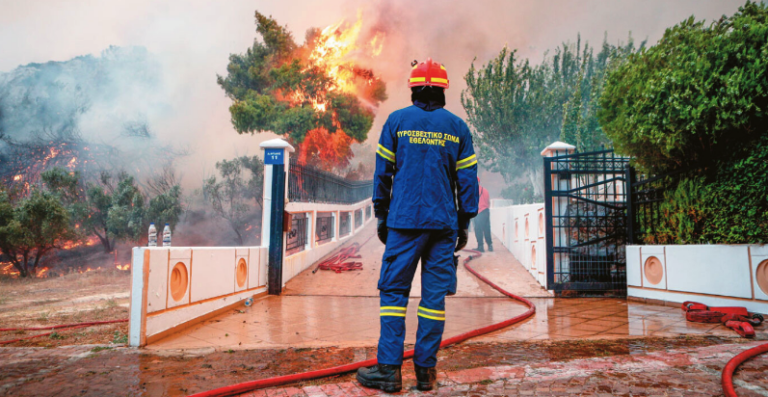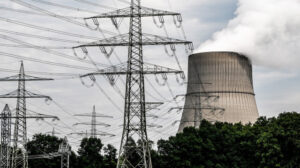Fire protection regulation for properties near forest land debuts this year. The Ministry of Environment and Climate Change’s platform, which will be accessed by owners of properties located in or near forests, woodlands and peri-urban greenery, went live mid-last week.
With the deadline for submitting declarations due next Friday (31/5), government sources tell “Proto Thema” that the platform will remain open, even informally, and will continue to accept declarations after the deadline, since the volume of those liable is huge (estimated at more than 1 million property owners). It is recalled that until now, those liable could submit the relevant declarations in paper form to the relevant municipalities.
However, there is also a large volume of details and clarifications requested by both the experts who prepare the reports (which are submitted on the platform), the local authorities that will carry out the checks, and the owners of the properties that are liable.
Given that the main objective of the regulation is to make buildings at risk of forest fires as less vulnerable to them as possible, but also that there are, in some cases, “conflicting” obligations of owners, for this year’s fire season owners are obliged to implement only preventive fire protection measures (cleaning, etc.).
The Fire Protection Regulation for Real Estate, within or near forested areas, focuses on additional measures to protect against fire both the surrounding area, i.e. outdoor structures, plantings, coverings of uncovered areas, etc., and the exterior of buildings, i.e. windows, roofs, wall material, etc.
It provides for measures such as mandatory fencing even for existing buildings, the replacement or addition of screening with metal fibres in the building’s windows and doors, for high and particularly high risk properties, and the cladding of the building with non-combustible materials (such as stones, bricks) in case of renovation.
The regulation, taking into account various parameters such as the number of fires, the areas burnt and their percentage of the total area per county, the morphology and vegetation of the area, the frequency of incidents and the infrastructure (among others), divides properties into four risk categories: low, medium, high and very high, determining the measures required, which vary from clearing yard areas, constructing solid fencing and widening roads to developing a property-by-property emergency plan.
In all cases, the necessary measures per property will be determined by a technical expert, who will prepare a building assessment report.
So what are the steps to be taken by the property owners concerned? How will they know whether they are obliged to submit a declaration of implementation of fire safety measures? Who should they contact? What is their deadline and how deep will they have to dig in their pockets?
Which properties are concerned?
The regulation applies to properties that have a building and are located within forests, forest ecosystems, woodland, grassland located on semi-mountainous, mountainous and rough terrain, whether publicly owned or recognised as private.
It also concerns properties with buildings on lowland grassland (not mountainous or semi-mountainous and not lying on rough ground), which are situated in whole or in part within a radius of 300 metres from the boundaries of woodland. Great care must also be taken by owners of properties located in peri-urban green areas and in areas declared to be forested or reforested or located in parks and groves in urban and residential areas.
As it is impossible in practice for a citizen to know with absolute certainty whether his property falls within the regulation and its obligations, the first step to be taken is a visit to a competent technical scientist/engineer.
He will locate the property on the forest map and from there he will be able to answer whether it falls within the regulation and therefore whether there is an obligation to prepare a fire protection study.
This study can be prepared by engineers who have the right to sign fire protection studies according to the provisions of Decree 99/2018 (A’ 187). Both the evaluation form and the technical report can be prepared by different scientists, but since they are interrelated documents, their content must be convergent.
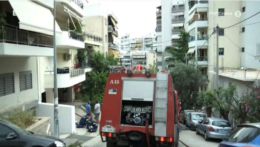
The fire protection study
If the technical scientist considers that the property with the building (whether it is a single-family house, apartment building or other building) falls under the said regulation, he/she should (at the owners’ request, of course) carry out an autopsy, in which he/she will examine the criteria for classifying the property in terms of the degree of risk.
Once he has done this, he will complete the risk assessment form and proceed to prepare the report. The deadline for this process officially ends on 31 May, although, due (also) to the register creation process currently underway, there will be an informal “grace period” during which the platform will remain open and accept reports.
The report will include a floor plan of the property, showing the locations of all buildings, as well as details such as access routes to the property, trees and their spacing, its position in relation to the woodland, building materials, neighbouring buildings and protection zones.
The technical scientist, after describing the property, will refer to the data supporting the selection of the criteria for classifying the property in terms of its risk and will specify the fire protection measures to be applied. The latter shall indicate the preventive measures, the passive fire protection measures and the active fire protection measures.
– Fenced properties. In any case, if the property falls under the provisions for a mandatory declaration, regardless of whether it is a divided property (horizontal and vertical, e.g., apartment buildings), the technical report, the risk assessment form and the declaration on the application of fire protection measures shall relate to the entire property (buildings and surrounding area) and shall be submitted once for the whole property.
– The deadline for implementing the measures. After submission of the report, the owners of the properties described above are obliged to submit a declaration of implementation of fire safety measures. By June 30, the owners must declare on the platform that their property meets the requirements of the fire protection regulation as described by the technical scientist, as they have taken all the necessary actions.
Access to the Unified Digital Platform for the management of preventive measures for land and other uncovered areas, the Register of Preventive Fire Protection Measures for Properties of the Ministry of Climate Crisis and Civil Protection, through the Unified Digital Portal of Public Administration (gov.gr-EPSP), is granted after authentication using Taxisnet codes.
The actions to be taken by the owner are described in the report drawn up by the technical expert. The declaration will be compulsorily submitted every year, with a deadline (according to the data available so far) of 30 April of the following year.
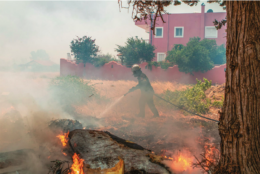
Inspections will be carried out in the fire season on a random basis and offenders will be required to pay: For low-risk properties a fine of 0.10 euros per square metre of the property’s surface area, for medium-risk properties 0.20 euros per square metre, for high-risk properties 0.30 euros per square metre and for very high-risk properties 0.50 euros per square metre.
The immediate measures to be taken by those liable
For this year’s fire season, only the provisions of preventive fire protection are mandatory. These provisions concern access to the property, the creation of protection zones, the storage of materials, regular cleaning and the preparation of an Evacuation Preparation Plan, in particular:
– The clearing of access to the property of combustible materials.
– Regular cleaning, which includes clearing trees and shrubs of dead grasses, as well as pruning, thinning of flammable tree vegetation, cutting of branches that are adjacent to or in close proximity to the exterior structural elements of the building, clearing ground of pine needles, etc.
– The transfer to an enclosed area or fireproof cabinet of materials freely stored on the property, such as firewood, fuel cans, paint, litter and other materials.
– The inspection and maintenance of the irrigation system, the cleaning of roofs and gutters of combustible materials.
– The design of perimeter protection zones in residential areas, i.e. three levels of graded protection around the building. These are zones of a minimum width of ten metres on three levels, designed to slow down the rate of fire and allow access for firefighters and their vehicles.
– And the preparation by the property owners of an Evacuation Preparedness Plan.
– For existing buildings, the retention of legally installed existing aboveground gas fuel tanks shall be allowed as an exception until 12/31/2030.
Evacuation preparation
Owners of properties in the vicinity of the regulation areas are required to prepare an Evacuation Preparation Plan. This is a list that outlines the actions to be taken before evacuating the building, and how occupants will escape from the property to safety. In the case of properties with more than one property, the Evacuation Preparation Plan shall be prepared by all the co-owners and posted in a prominent place for the information of occupants and the public.
It should indicate the Civil Defence plans of the community to which the property belongs, including the assembly points, and identify escape routes, alternative escape routes and the designated safe place. The latter is the meeting point for family members, which should be the same as that of the community.
The contacts with whom the affected people will be contacted, the appropriate reactions in case their clothes catch fire (standing, falling, rolling) and the existence of an emergency supply bag, which should include water and food that does not need to be refrigerated or cooked, a torch, radio, batteries, a first aid kit, money and useful documents, should also be defined.
The list of pre-evacuation actions, according to the regulation, includes closing portals that will be left unlocked and blocked with wet towels on the bottom, picking up flammable fabrics such as awnings and curtains, and gathering away from windows and doors flammable furniture. Also, turning off air conditioners and gas supply, and building lights should be left on.
On the outside of the building, flammable items (such as garden furniture or rubbish bins) should be placed inside or in a swimming pool, if one exists, and grills using gas or propane tanks should be removed and turned off.
fotia
If there are watering hoses, they should be attached to the faucets so that firefighters can use them, and there is provision for filling buckets with water and placing them around the house. The sprinklers should be turned off so that the water pressure is not affected. Provision is made for stairs to be placed in a prominent part of the house so that firefighters can have direct access to the roof of the building and for the protection of pets and provision for locating them.
The passive and active fire protection provisions, with the actions described in the report to be carried out (construction of fences, replacement of windows with fire resistant windows, etc.), are subject to mandatory staggered implementation.
Implementation deadlines
For properties included in the particularly high risk category, the deadline for implementation is 31 March 2025, while for properties that are of medium or low risk, the deadline for mandatory implementation is 31 March 2026.
The above deadlines are exempted from the above deadlines for those liable to apply for a building permit for the property where the existing building is located or a change of use or renovation is carried out (expenditure exceeding EUR 20,000 and at the same time 15% of the value of the building) as specified in the regulation.
Is it allowed to cut down trees?
For settlements, the local authorities shall complete the risk assessment form and the technical report as to the establishment of a fire-free zone and any grading thereof around the perimeter of the settlement boundaries.
If the fire protection measures provide for the felling of trees within private properties located within planned areas and within the settlement or outside planned areas with buildings erected on the basis of a building permit to create protection zones, this shall be carried out by issuing a permit for small-scale building works.
The technical report of the Fire Protection Regulation for Real Estate in or near forest areas shall be submitted there, the provisions of which shall prevail over the provisions of the Building Code in the event that their application does not make it possible to ensure the minimum mandatory number of trees.
For the works, approval from the relevant Forestry Service is required in the case of buildings located within parks and alms of cities and residential areas protected by forestry legislation, buildings erected after the relevant approval within areas protected by forestry legislation, as well as on the planning proposal by the local authorities of the perimeter protection zones in settlements and residential densities.
Provisions that override the regulation. The measures introduced by the Regulation are applied in addition to the requirements of the respective building fire protection regulation and fire prevention fire protection provisions, and are superseded if they are less favourable.
Furthermore, the requirements of this Regulation apply in parallel with the requirements of other specific regulations that regulate the safety and functionality of structures or their installations (e.g., seismic protection, energy efficiency, lightning protection, accessibility, etc.).
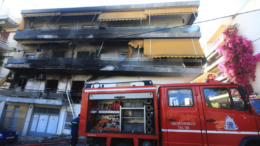
Inspections and fines
The inspection to determine whether the requirements of the regulation are met will be carried out by autopsies by three-member committees appointed by the municipalities concerned and composed of a forester or agronomist, an engineer and another official of the Civil Protection Department of the municipality or district concerned.
If the municipalities will not have all of these specialties, the committee may appoint officials of other specialties, but relevant to the subject of the regulation, serving in other departments: Technical Service, Environmental Service – Civil Protection, Building Service.
The inspections will be carried out during the fire season on a random basis, in proportion to the risk of each property and will relate exclusively to the verification of compliance with the measures in the technical report, as declared by the owner of the property.
Albania blackmails the members of the ethnic Greek minority in Himara not to self-identify as Greeks
For owners of properties subject to the provisions of the regulation, non-compliance will result in administrative and criminal penalties. If owners fail to proceed with the required submission of the property risk assessment form and the technical report of required measures and other data by a technical scientist, a fine proportional to the surface area of the property and its risk category is imposed.
For low-risk properties, a fine of EUR 0,10 per square metre of surface area of the property is imposed, for medium-risk properties EUR 0,20 per square metre, for high-risk properties EUR 0,30 per square metre and for very high-risk properties a fine of EUR 0,50 per square metre is imposed.
The imposition of the fine shall be preceded by a recommendation to the owner of the property to submit the assessment form and the technical report within one month and to implement the prescribed fire protection measures within two months. If compliance is found, only the minimum administrative fine of EUR 250 is imposed.
If it is found that the assessment form and the technical report of the technical expert, as well as the declaration of implementation of the prescribed measures, have been drawn up, but the prescribed measures have not been implemented, the fine is halved.
If it is found that no action has been taken to comply with the requirements of the Regulation, the owner shall be fined the full amount of the fine. The same procedure is followed when errors are found in the preparation of the risk assessment form and fire protection measures.
If any of the fire protection measures provided for in the report are not implemented, the fine amounts to EUR 250, following a recommendation and a two-month period for compliance.
If it is found that not all the fire protection measures provided for in the technical report have been implemented, a fine will be imposed. If the fire protection measures provided for in the technical report have been implemented and the owner’s annual declaration on their implementation is not submitted, a fine of EUR 100 shall be imposed.
Ask me anything
Explore related questions
